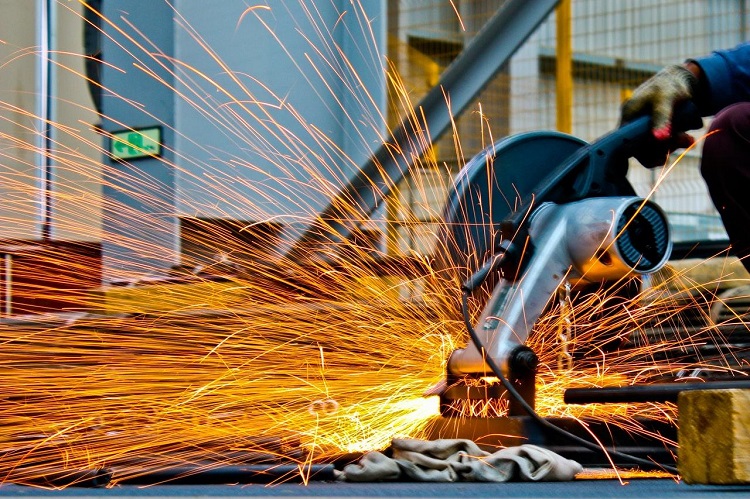Metal plays a major role in how people function in every household and working environment. Metal is the stabilizing factor that makes all of today’s conveniences possible, from appliances and light fixtures to desk equipment, chairs, and utensils. The method of converting raw metals into premade forms for assembly use is called metal manufacturing.
Although manufactured metal products are prevalent, few people understand how the process of metal fabrication works. Most individuals think of welding when they hear the processing of metal. But welding is only one process used by metal producers.
Some examples of products made with metal fabrication include:
- Hand tools
- Bolts, nuts, and screws
- Cans
- Cutlery
- Pipes and pipe fittings
- Metal windows and doors
- Equipment attachments
- Car parts
Types of Metal Fabrication Methods
The various types of metal fabrication methods fall under the final use of the manufactured product or the type of process used during the manufacturing process. These are some of the metal fabrication processes:
1. Cutting
Maybe the most widely used methods of Metal Fabrication include cutting, where metal sheets are divided into halves, thirds, or smaller parts.
2. Folding
Folding, where a metal surface is manipulated to form at a certain angle, is one of the most complex metal fabrication techniques. The goal is to make the metal surface fold at a 90-degree angle for such folding applications, or anything else that is either more or less blunt.
3. Casting
Casting is one of the oldest forms of metal processing, where molten metal is poured into a mold and left to solidify into a particular shape. In this application, the most common metals used include steel, iron, gold, copper, silver, and magnesium
4. Machining
The method is known as machining if a machine is used to extract portions from a piece of metal. The method is usually performed on a lathe, spinning the metal toward instruments that trim corners and edges to cut the piece down to a desired shape or measurement. A hole or series of holes can be shaped straight through the metal surface in some machining applications.
5. Punching
In this process, holes are made in a piece of metal, where metal is put under a die and submitted by a drill to a punch-through. Depending on the purpose of a given application, punching falls into one of two subcategories. In most cases, to fasten latches or other foreign parts, the aim is to punch holes into a metal plate.
6. Shearing
For sheets of metal that involve long cuts, the method used is shearing. The sheet is fed horizontally via a metal-cutting system in some situations. A cutting tool is applied vertically against the length of a flat metal sheet in other applications. Shearing is often used to trim down the edge of a sheet of metal, but anywhere along with the metal, the procedure can be performed.
7. Stamping
Punching is not the only method of metal manufacturing that uses a die. However, in some applications, the purpose is not to form a hole but, without penetrating, to lift a certain portion of a metal sheet. The stamping method is used to form certain shapes, letters, or images inside a metal sheet or panel for applications such as these.
8. Soldering
In addition to cutting, among craft enthusiasts, welding is one of the most common metal manufacturing methods. The welding process requires the joining of two separate metal sections. The components used in a welding application may be boards, plates, bars, or forms, but it doesn’t really matter as long as the parts are made of metal.
Steps in Metal Fabrication
A metal fabrication shop is a place full of tools for cutting, hole punching, folding, casting, shearing, and many more. To find fabrication shops near your location, you can search for “Fabrication Shops Near Me” using online tools and other various methods. Although metal fabrication services focus on the shaping and cutting of metal, there are multiple steps involved in a successful fabricated project. These steps are used to create an endless variety of products.
- Designing a metal fabrication project: The first step in any project is design.
- Fabricating the part: During this phase, each of the components from the design phase will be cut and shaped. The tools used to fabricate metal can include shears, mills, lathes, and nibblers.
- Finishing and assembling the part: The last step in metal fabrication is finishing and assembling the pieces into the final product. These processes strengthen the product and ensure that it’s ready for use.
Demand for metal manufacturing is expected to rise impressively in many markets in the coming years. Businesses that want to succeed in a changing global economy need to align investments in expertise and labor with choosing new technologies and introducing spotless customer service, like metal manufacturing companies and the like.
 HammBurg Be informed with latest news, reviews, entertainment, lifestyle tips, and much more.
HammBurg Be informed with latest news, reviews, entertainment, lifestyle tips, and much more.




